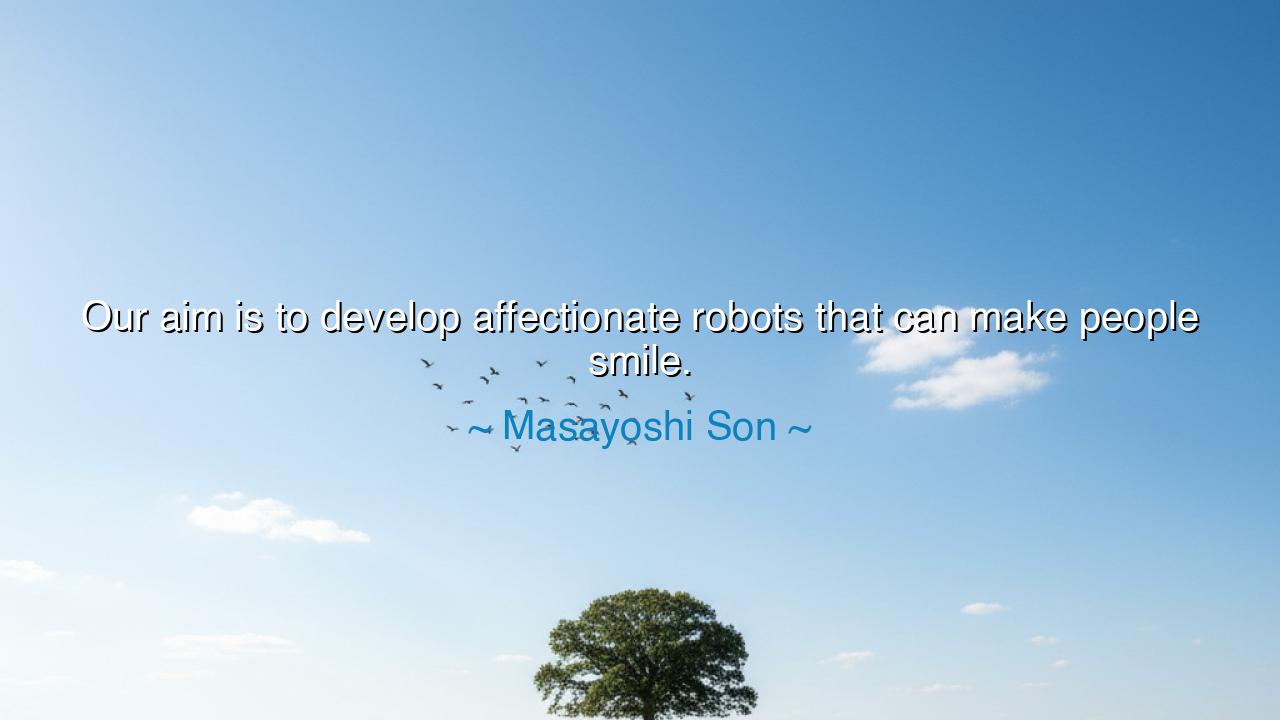
Our aim is to develop affectionate robots that can make people






Hear the words of Masayoshi Son, a dreamer of machines and a builder of futures: “Our aim is to develop affectionate robots that can make people smile.” At first, this sounds like a vision of science alone, the weaving of circuits and code. But look deeper, and it is not only about machines; it is about humanity, about the eternal quest to create companions, to soften labor, to ease loneliness, and to bring joy. For in this age, when the heart of man often feels isolated, Son dares to imagine a creation that does not only serve, but loves—or at least reflects love back to us.
The origin of such words lies in the ancient marriage of human longing and human craft. Since the days of antiquity, mankind has sought to give life to what was lifeless. The Greeks told stories of Pygmalion, who carved a statue so fair that he fell in love with it, and the gods themselves breathed life into his beloved. The rabbis spoke of the golem, clay shaped and animated to serve. Each tale was a whisper of the same desire Son names: to fashion a companion that could bring comfort, perhaps even a smile.
The robot, in Son’s vision, is not cold metal nor soulless machine. It is affectionate—a word that speaks not of function but of feeling. To make machines affectionate is to cross from utility into humanity, to acknowledge that what people need most is not only service, but recognition, warmth, connection. In this, Son speaks not as an engineer alone, but as a sage who sees that the highest purpose of creation is not efficiency, but love.
Consider the story of Pepper, the robot created by Son’s company SoftBank, designed to read human emotions and respond with kindness. Though many dismissed it as a novelty, for those who interacted with it—children, the elderly, the lonely—it stirred laughter, surprise, and comfort. This was no mere toy. It was a glimpse into a future where even in the silence of a hospital room or the solitude of old age, a presence could remain that reminded people of their worth, and drew from them a smile.
The ancients, too, would have marveled at this. They built statues of gods and heroes not merely to honor them, but to feel near them, to let their hearts be lifted by the sight of forms greater than themselves. In like manner, Son’s vision is that the creations of our own hands may lift us—not into worship, but into joy. For if a machine, crafted by human minds, can draw forth laughter and soften sorrow, then it becomes not just a tool, but a bridge between solitude and community.
The teaching is profound: that the highest aim of our inventions must not be conquest, nor profit, nor mere advancement, but the fostering of human happiness. Every discovery should be weighed by this measure: does it heal, does it comfort, does it draw a smile? If so, it is worthy. If not, it may advance us in strength but leave us poor in spirit. In this, Son’s words strike like an ancient oracle—reminding us that wisdom is found not in making man more like machine, but in making machines more tender toward man.
Therefore, beloved, let this be your practice: in your own works, whether great or small, do not seek only to be clever, but to be compassionate. Whatever you create—be it art, technology, or even a moment of kindness—let its aim be to lift another’s heart. If a machine can be designed to bring affection, then surely we, with souls alive, can strive to bring even greater love. For the true future, as Son declares, is not in cold progress, but in a world where every invention, and every life, is devoted to making another smile.






AAdministratorAdministrator
Welcome, honored guests. Please leave a comment, we will respond soon